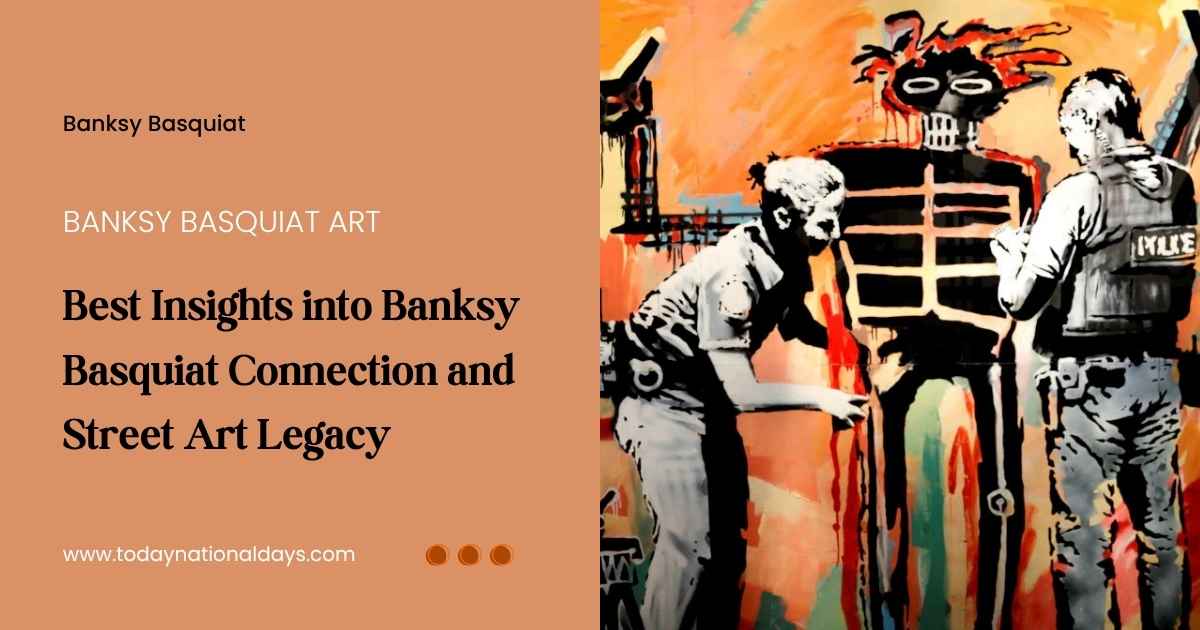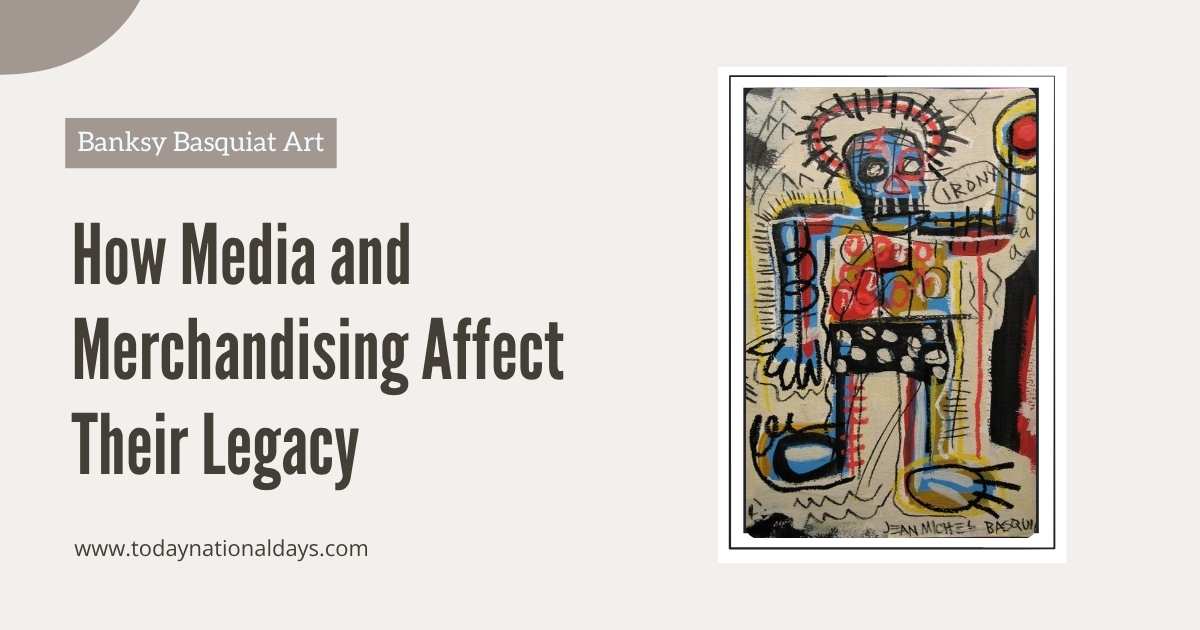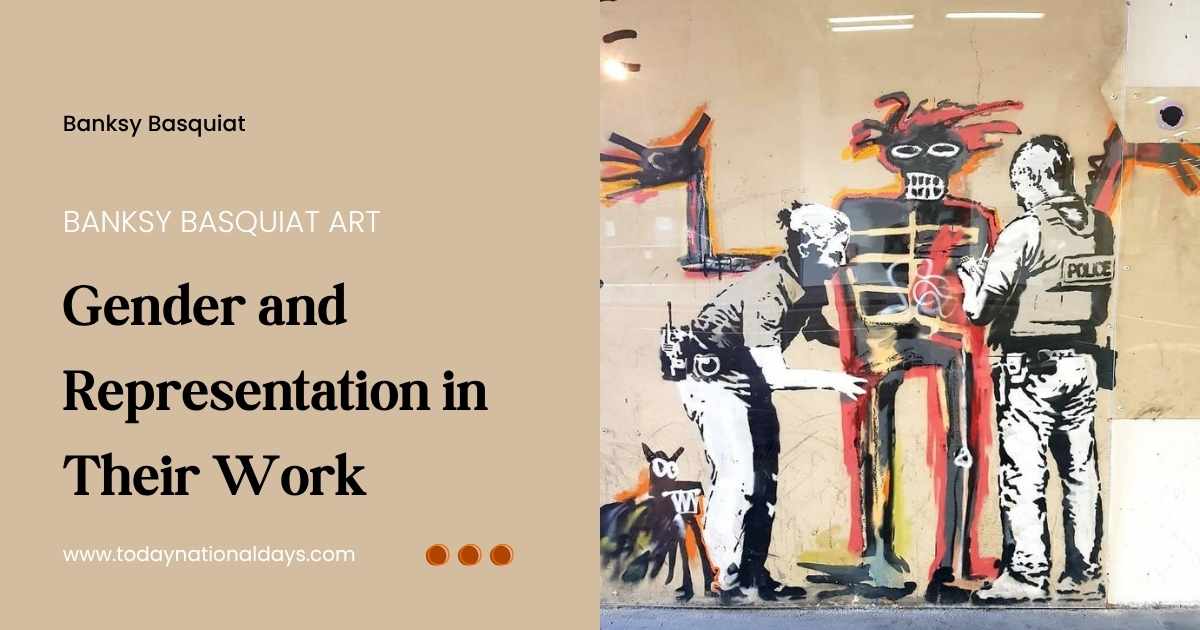
Banksy Basquiat—two of the most provocative names in modern art—represent entirely different generations, yet echo each other in message, medium, and defiance of artistic norms. The anonymous UK street artist, often draws inspiration from the bold, raw expression of Jean-Michel Basquiat, a New York City icon whose neo-expressionist work revolutionized graffiti and fine art. Their overlapping narratives have sparked conversations in cities like London, where murals and exhibitions have paid homage to Basquiat’s legacy through Banksy’s eyes.
In this blog, we analyze how these two art figures are not only connected by visual references but also by deeper cultural themes—race, capitalism, public space, and rebellion. This content provides research-based insights for art enthusiasts, students, and cultural critics looking to compare their styles, symbolism, and global influence.
Top Artistic Themes Shared Between Banksy and Basquiat
Both Banksy and Basquiat challenge societal norms through striking imagery and symbolic narratives. While their techniques differ—stencil art versus frenetic brushwork—their purpose aligns. These are some of the key thematic overlaps:
1. Commentary on Power and Control
- Banksy frequently critiques military, law enforcement, and political systems through public murals.
- Basquiat incorporated symbols of royalty (like crowns) and skeletal imagery to express the struggle against oppressive systems.
- Both artists place marginalized communities at the center of their art, forcing the viewer to reckon with institutional injustices.
2. Cultural Identity and Race
- Basquiat’s work focuses deeply on African American identity, drawing from jazz, boxing, and Haitian heritage.
- Banksy references racial issues through parody and satire, often using Black figures to highlight Western hypocrisies.
- Their work remains relevant today as racial justice continues to dominate social discourse globally.
3. Anti-Establishment Approach
- Neither artist conforms to gallery norms: Basquiat began with graffiti in Manhattan; Banksy often uses unauthorized public spaces.
- They critique the commodification of art itself, questioning the value placed on commercial success.
- Their art provokes thought, not just aesthetic admiration.
Table: Comparison Between Banksy and Basquiat
| Feature | Banksy | Jean-Michel Basquiat |
|---|---|---|
| Origin | United Kingdom | United States (New York City) |
| Medium | Stencil graffiti, installations | Acrylic, oil stick, mixed media |
| Active Period | 1990s – Present | Late 1970s – 1988 |
| Identity | Anonymous | Public, known figure |
| Key Themes | Politics, war, capitalism | Race, identity, power |
| Public Recognition | Viral social media, news | Galleries, celebrity collectors |
| Artistic Background | Street art | Graffiti to fine art |
Best Known Collaborative Tribute: Banksy’s Basquiat Murals
In 2017, Banksy painted two murals near the Barbican Centre in London to mark a Basquiat exhibition. These weren’t collaborations in the traditional sense but were created as visual tributes.
1. “Ferris Wheel” Mural
- Depicts Basquiat’s iconic crown figure being frisked by police.
- References both the exhibition and broader themes of racial profiling.
- The setting—near a major UK art institution—adds an ironic twist, since Basquiat was often excluded from such spaces during his life.
2. “Carousel” Mural
- Shows Basquiat’s crown and skeletal characters riding a Ferris wheel made of police batons.
- Reflects Banksy’s tendency to remix famous imagery into darker, modern critiques.
- Serves as a reminder that art history is often sanitized and needs retelling through critical perspectives.
These pieces reignited interest in how artists comment on each other across generations.
Banksy and Basquiat’s Influence on Youth and Protest Culture
Street art is often the voice of the unheard, and both Banksy and Basquiat serve as unofficial mentors to emerging youth artists.
- Urban Expression
- Murals, stickers, and tags inspired by both artists populate urban landscapes worldwide.
- Their legacy lives on in protests, where art becomes a vehicle for resistance.
- Educational Institutions
- Schools and colleges in the USA use their works to teach about modern visual culture.
- Art history curricula increasingly include Basquiat and Banksy as primary study figures.
- Digital Adaptation
- Their styles are frequently mimicked in NFT art, meme culture, and social media campaigns.
- The accessibility of their themes ensures relevance with every generation.
Both artists speak a language that young people understand: direct, visual, and unapologetically bold.
Techniques That Define Each Artist’s Signature Style
While the messages align, their technical approaches are distinct and worth examining for artists and collectors.
Banksy
- Prefers stencil techniques for speed and anonymity.
- Uses monochromatic tones with splashes of red or yellow.
- Often incorporates physical structures (walls, signs) into the concept.
Basquiat
- Layers chaotic brushwork with symbols, text, and figures.
- Combines graffiti aesthetic with fine art composition.
- Frequently uses primary colors, crowns, and anatomical forms.
Their methods suit their messages: Banksy’s surgical precision vs. Basquiat’s visceral rawness.
Top Lessons Artists Can Learn from Banksy and Basquiat
Artists and creatives can extract several key lessons from the life and work of Banksy and Basquiat:
1. Create from Conviction
- Neither waited for institutional approval to begin creating.
2. Embrace Imperfection
- Raw, unpolished work often connects more deeply with audiences.
3. Say Something
- Art isn’t just visual; it’s communicative. Both artists use their platforms for messages that matter.
These lessons encourage today’s creators to value message over medium.
How Media and Merchandising Affect Their Legacy

The commercial success of Banksy and Basquiat has sparked ongoing debate about the relationship between art and commerce. Both artists challenge capitalism, yet their works have fetched millions at auctions, raising questions about authenticity and accessibility.
- Banksy’s shredded artwork at Sotheby’s gained headlines and sparked debate about the value of art in a capitalist world.
- Basquiat’s paintings have broken sales records, with collectors often drawn to his raw portrayal of Black identity.
- Merchandise such as t-shirts, posters, and NFTs replicate their work, making it widely accessible while sometimes diluting its original message.
This tension reflects how their influence has moved beyond art communities into mainstream culture.
The Role of Galleries and Institutions in Shaping Their Reputations
Although both artists emerged outside of institutional walls, galleries and museums have since played a significant role in elevating their reputations.
- Basquiat’s solo show at the Whitney Museum in the 1990s marked a turning point in how graffiti-born artists were perceived by the establishment.
- Banksy’s works have been featured in unauthorized shows and have entered museum collections despite his disapproval.
- Exhibitions in cities like London and New York now treat street art with the same seriousness as classical work.
Their transition from the streets to museums highlights the paradox of rebellious art being embraced by institutions.
Collector Culture and Art Market Value
The rise of street art as a collectible genre has changed how both Banksy and Basquiat are viewed in the art world.
- Celebrity collectors and investors drive up demand, sometimes prioritizing profit over artistic merit.
- Auction houses feature their work prominently, influencing new trends in art investment.
- Limited prints, originals, and authenticated merchandise contribute to a highly competitive collector culture.
While some purists resist this commercialization, others argue it proves that meaningful art can achieve both cultural and financial value.
Public Reaction and Social Media Impact
Banksy and Basquiat have both triggered wide-scale reactions through their art, much of which has been amplified by modern media platforms. Their bold and rebellious messages are frequently circulated on social media, turning individual pieces into global talking points within hours.
For instance, Banksy’s murals often go viral, prompting debates on ownership, public space, and political critique. Similarly, Basquiat’s artwork continues to gain traction through digital galleries and fan pages that dissect his symbolism and relevance. The widespread distribution of their work has helped democratize art appreciation, making their voices more accessible across different cultures and age groups.
This digital presence not only ensures their work remains in constant conversation but also influences public opinion on contemporary issues. Through reposts, comment threads, and reaction videos, everyday people become participants in the dialogue their art initiates.
Gender and Representation in Their Work

Although gender themes aren’t as overt in Banksy and Basquiat’s primary bodies of work, both artists have addressed the concept in nuanced and symbolic ways. Basquiat occasionally depicted strong female figures or incorporated references to feminist thought, highlighting issues around identity, commodification, and body politics.
Banksy, on the other hand, often uses female subjects in his critique of societal structures—such as the iconic image of a girl letting go of a heart-shaped balloon, symbolizing loss, innocence, or hope. Other works subtly reflect on women’s roles in society or show women in moments of resistance or solitude.
While their main themes revolve around race, politics, and power, the undercurrent of gender representation plays an essential role in shaping their broader messages. This subtle inclusion allows for varied interpretations and continues to spark conversations in both art and academic circles.
Final Reflection: Banksy and Basquiat the Power of Public Art
Banksy and Basquiat are more than just names in art history—they’re disruptors who use visual language to address injustice, identity, and access. Their work transcends gallery walls and connects with everyday people. From the UK to the USA, their impact spans generations, inspiring artists to paint what matters, where it matters, and why it matters.
As their works continue to be referenced and revived, the conversation they started remains unfinished—and that, perhaps, is the greatest tribute to their legacy.
FAQ About Banksy and Basquiat
Q1: Did Banksy and Basquiat ever meet?
No. Basquiat died in 1988. Banksy emerged in the 1990s.
Q2: Is there a painting they worked on together?
There are no direct collaborations, but Banksy’s murals have paid homage to Basquiat.
Q3: Why do people compare Banksy to Basquiat?
Both challenge traditional art systems and create from a street-based perspective.
Q4: Is Basquiat considered a street artist?
He began as one (SAMO) but later transitioned into gallery art.
Q5: Where can I see Banksy’s tribute to Basquiat?
The murals are located near the Barbican Centre in London, UK.






